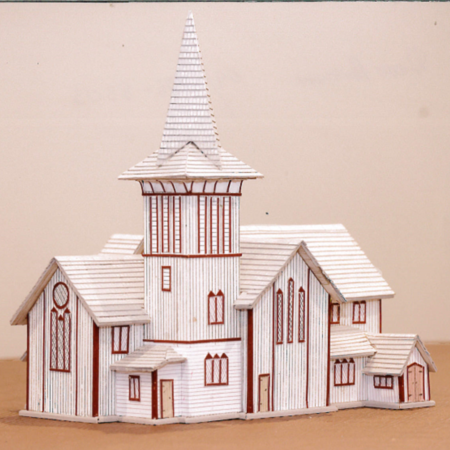Last year one day when I sat in my office preparing the sermon I heard a knock on my door. I opened and there was a couple who handed me a photo. It was the photo of a model of St Paul’s. Their friend Dave Brown had made it. He had asked them to give the photo to the Vicar of St Paul’s, along with a phone number. I subsequently rang Dave Brown and talked with him. He had been working in construction and now lives in a retirement village in Auckland. In his retirement he has taken up building models. Even though he doesn’t regularly attend church, he likes to model churches. When he became aware of St Paul’s, it was a church he just had to model. The striking architecture fascinated him. In his model he did leave off the Mandy-loo (kitchen and toilet) annex. But the church is clearly recognisable.
The church building here at St Paul’s is clearly noticeable, particularly also due to its location and grounds. This prominence can be used in the Church’s mission: it may enable us to reach people and proclaim the Good News. Some may also expect people in a heritage church to do slightly odd things, like dressing up in ecclesiastical garb, singing hymns, saying long prayers and preaching about Jesus. That can be liberating, because as a church we don’t have to always adapt to the latest fads or society’s expectations, but can continue to proclaim the Gospel, which disrupts comfortable sensitivities. It can also be inhibiting, because people expect a whole lot of formality and religious sentiments and ritual without a living faith. Such a formal setting may even appear threatening to some people. That’s why it is so important, particularly for a congregation meeting in a heritage church, to be friendly and inviting. Even more so it should be a place where people are nurtured in their faith, where we are strengthened to a living faith. It is so much better to have a church like St Paul’s be used as a church, where God is worshipped and the Good News of Jesus preached, than as a heritage monument to old architectural styles or a culture long since gone.

